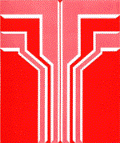Nebraska Academy of Sciences

Transactions of the Nebraska Academy of Sciences and Affiliated Societies
Date of this Version
2005
Document Type
Article
Abstract
We examined problem-solving in nuclear science by gifted junior high school students, senior high school students, first year undergraduates, undergraduate physics majors, and graduate teaching assistants. The first study examined differences between "expert" and "novice" approaches, whereas the second study investigated the learning of problem-solving skills with a pre- and post-test. The results showed that with increased experience or expertise, students tended to solve the problems using higher levels of Bloom's (1956) taxonomy. Junior high school students' performance improved significantly after a week-long hands-on nuclear physics class. However, when solving a more conceptual nuclear physics problem, there were no significant differences in the pre- and post-tests of the gifted students at the same grade level. These studies suggest that gifted junior high school students have comparable cognitive abilities to older students, but that they lack the necessary knowledge base, that they use problem solving strategies that are "lower" on Bloom's taxonomy, and that they focus on memorization rather than methods which are evaluative or synthetic.


Comments
2005. Transactions of the Nebraska Academy of Sciences 30: 9-15; Copyright © 2005 Cherney, Winter, and Cherney